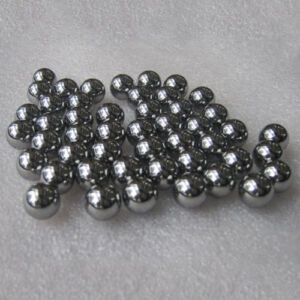WEISON manufactures tungsten heavy alloy shielding using tungsten alloys of the highest quality in view of their demanding application in the medical and nuclear industries. Our shielding products are manufactured high density tungsten heavy alloy materials, using the most advanced technologies available that ensures compliance with international quality criteria. Our products also undergo a heavy quality checking process to make them safe and most reliable.
Dimensions:
Balls:Φ2mm above
Shafts: (Φ2mm above)×(Length max.600mm)
Nuclear Medical Radiation Shielding
Tungsten alloy(heavy alloy) is ideal for shielding against X rays and gamma radiation. The very high density of tungsten shielding (more than 60% denser than lead) allows a reduction in the physical size of shielding components, without compromising their rigidity or the effectiveness of the shielding characteristics. Tungsten heavy alloy shielding is used in applications such as collimator, nuclear shielding, beam stop, PET syringe shield, vial shield, isotope container, FDG container, multileaf collimator etc.
Positron Emission Tomography (PET)
Positron emission tomography (PET) is one of the nuclear medicine techniques available for diagnosis. Whilst X-rays provide information on the structure of the body, PET shows the chemical function of a particular organism. PET involves the injection of FDG (a glucose-based radionuclide) from a shielded syringe into the patient. As the FDG travels through the patient’s body it emits gamma radiation which is detected by a gamma camera, from which the chemical activity within cells and organs can be seen. Any abnormal chemical activity may be a sign that tumours are present.
PET scans are frequently used to detect cancerous tumors and diseases of the brain and coronary arteries. Applications for tungsten alloy shielding in PET include:
PET syringe shield
Tungsten vial shield
Tungsten FDG transport container
Collimator for gamma camera
Technetium generator
Multileaf collimator
Radiotherapy destroys cancer by directing beams of radiation directly onto the tumour. The beams of radiation require a very fine focus to avoid harming the surrounding healthy tissue. This focus is achieved by using a multileaf collimator , consisting of two rows of very thin tungsten alloy plates, which can be configured to exactly match the dimensions of the tumor.










